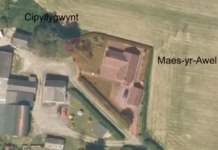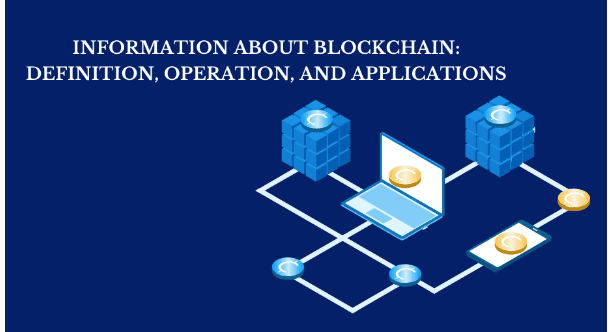Blockchain Technology is rapidly growing with a promising future, and obtaining a Blockchain Certification can be a valuable asset in this industry. Blockchain Technology is becoming increasingly important for businesses and individuals alike with its potential to revolutionise various sectors, including finance, healthcare, and supply chain management. In this article, we will explore Blockchain Technology and provide insight into the Future of Blockchain Technology and its various applications.
Blockchain Technology was introduced in 2008 as a critical component of Bitcoin, the world’s first digital currency. However, Blockchain technology applications have since expanded far beyond digital currencies, with numerous industries adopting the Technology to improve security, efficiency, and transparency in their operations. This article will provide an overview of Blockchain, how it works, and some of its most exciting applications in various industries.
Table of Contents
- What is Blockchain, and how does it work?
- Key Features of Blockchain
- Applications of Blockchain
- Advantages and Challenges of Blockchain
- Future of Blockchain
- Conclusion
What is Blockchain, and how does it work?
Blockchain is a Technology that allows secure and transparent data recording and storage through a distributed ledger. It works by creating a digital ledger of transactions verified and recorded by a network of computers called nodes. Each block in the chain contains a record of multiple transactions connected to the previous block, forming a continuous and unalterable record.
The Blockchain network is decentralised, which means no central authority controls the network, and all nodes work to validate new transactions through a process called consensus. The combination of decentralised control, cryptography, and consensus makes Blockchain a secure, transparent, and tamper-proof way to store and transfer data with potential applications in various industries.
Key Features of Blockchain
Blockchain is a unique Technology that can revolutionise many industries. Some of the key features of Blockchain Technology are listed below:
- Decentralisation: One of the most notable features of Blockchain is its decentralised structure. This means no central authority controls the system, and all participants have equal access to the ledger.
- Security: Blockchain uses advanced cryptographic algorithms to secure the network and protect against unauthorised access, making it highly secure.
- Efficiency: Transactions can be processed quickly and efficiently without intermediaries or third-party institutions. Hence, it can reduce costs and improve the speed of transactions.
- Smart Contracts: Blockchain Technology allows for the creation of self-executing contracts, known as smart contracts. These contracts are automatically executed when conditions are met, making them highly efficient and secure.
Applications of Blockchain
Blockchain Technology has gained immense popularity recently due to its potential to create secure and transparent systems for various industries. There are numerous applications of Blockchain Technology, including cryptocurrencies, supply chain management, digital identity verification, voting systems, healthcare, real estate, energy, insurance, and many more.
Blockchain can create:
- A transparent and secure supply chain
- A decentralised and secure digital identity system
- A secure and transparent voting system
- A secure and transparent system for storing and sharing medical records
- A secure and transparent system for buying and selling real estate
- A secure and transparent system for tracking the production and distribution of energy, and
- A transparent and secure system for insurance claims processing.
The potential applications of Blockchain Technology continue to expand as the Technology evolves.
Advantages and Challenges of Blockchain
Blockchain is a decentralised and secure distributed ledger Technology that enables secure, transparent, and tamper-proof transactions. Here are some of the advantages and challenges of Blockchain:
Advantages:
Security: Blockchain is highly secure due to its decentralised nature and use of cryptographic algorithms. It is nearly impossible to hack or modify the information stored in a Blockchain, making it ideal for applications that require high security.
Transparency: Transactions recorded on a Blockchain are transparent and visible to all participants; hence it is very transparent.
Decentralisation: Blockchain eliminates the need for transaction intermediaries, reducing costs and faster settlement times..
Immutable: Blockchain is a reliable and tamper-proof data source, as a transaction cannot be deleted or altered.
Challenges:
Scalability: As more transactions are added to a Blockchain, the size of the Blockchain grows, leading to slower transaction times and higher costs.
Adoption: Despite its potential, Blockchain adoption is still limited in many industries due to a lack of understanding and infrastructure.
Regulation: Blockchain operates outside of traditional financial systems and is largely unregulated.
Energy consumption: Blockchain mining requires significant amounts of computing power, which can lead to high energy consumption and environmental concerns.
Privacy concerns: As all transactions are visible to all participants, it is not ideal for people with privacy concerns.
Future of Blockchain
The Future of Blockchain is exciting and holds tremendous potential for various industries. Some potential developments that can shape the Future of Blockchain are listed below:
Increased adoption: The adoption of Blockchain Technology is likely to increase. Many large companies and governments are already investing in Blockchain Technology, and this trend is expected to continue.
Expansion of use cases: Although Blockchain is mainly associated with cryptocurrency, it can potentially revolutionise industries such as healthcare, supply chain management, and identity verification.
Interoperability: Blockchain networks are currently fragmented, and they need to interoperate to enable the transfer of value between different networks.
Improved scalability: The current scalability limitations of Blockchain are expected to be overcome through various methods such as sharding, sidechains, and state channels.
Integration with other technologies: Blockchain will likely be integrated with other technologies, such as artificial intelligence and the Internet of Things, to create more powerful and efficient solutions.
Conclusion
In conclusion, Blockchain Technology has the potential to revolutionise various industries by providing secure, transparent, and tamper-proof transactions. Its advantages include high security, transparency, decentralisation, immutability, and efficiency. Despite its challenges, the Future of Blockchain is highly promising.

| [donate]
| Help keep news FREE for our readersSupporting your local community newspaper/online news outlet is crucial now more than ever. If you believe in independent journalism,then consider making a valuable contribution by making a one-time or monthly donation. We operate in rural areas where providing unbiased news can be challenging. |



















